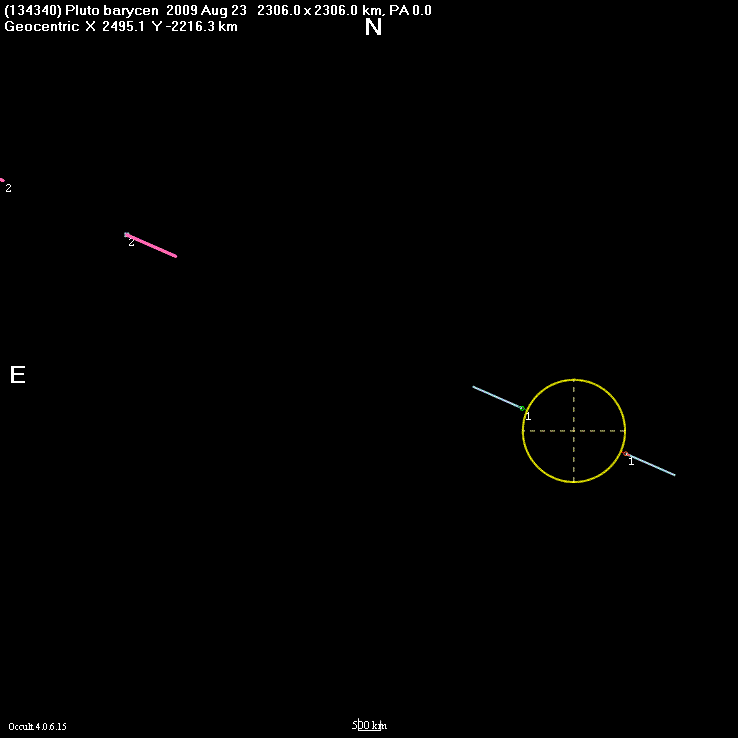|
|
A 5 minute occultation was recorded by John Greenhill, using dophot photometer technique.
Several other attempts were made but only one successful observation has been reported.
View the updated prediction.
Observers:
1 J Greenhill,Mount Canopus Observatory, Tasmania, AU
2(P) Prediction July 2009

Discussion:
The circle above is plotted at the expected 2306 km diameter of Pluto. With only one chord it is not possible to determine whether John was north or south of the central line of the event. However, assuming the updated prediction was approximately correct, the close to expected chord length would suggest that the chord might lie close to the central portion of Pluto. The slow D and R caused by the light going through the atmosphere shows clearly.
The figure below shows the light curve of the occultation.

The plot uses the 50% light level points.
Observational Data:
Observation details for MP (134340) Pluto
By Star not in catalog
On 2009-08-23 at 11:26:00.0
_______________________________
Observer John Greenhill
Location Mt Canopus Observatory, AU
Longitude +147:25:52.6
Latitude -42:50:49.4
Altitude 1000 m
Datum WGS84
Telescope Newtonian
Aperture 100 cm
Seeing Steady Clear
Timing Other linking Video, photo or photoelectric
Disappearance 11:11:50.00
Reappearance 11:16:01.00
Comments: Extracted by JT from lightcurve data sent.
The upper curve shows the differential magnitude of the fainter
comparison star. I used dophot photometry. The data are rather noisy and
it may be possible to do better with aperture photometry. Maybe Bruno
would like the fits files to do this. I do not have a setup for aperture
photometry of 350 files.
The interesting feature is the time of the occultation. The centre is at
about 11:14:30 UT - 15 to 20 minutes before predictions. I guess there
must be a significant error in the astrometry of the occulted star. The
depth is about 0.15 magnitudes as expected. The atmosphere shows up well.
Regards,
John Greenhill